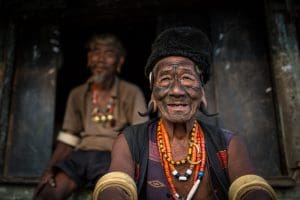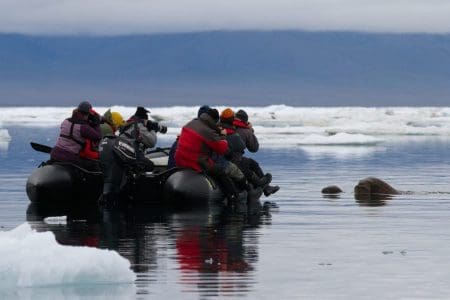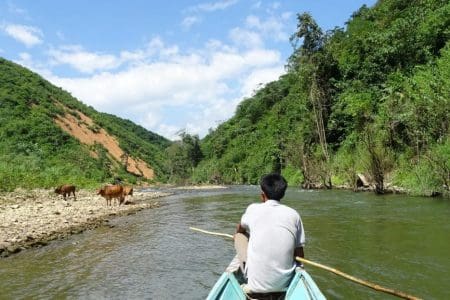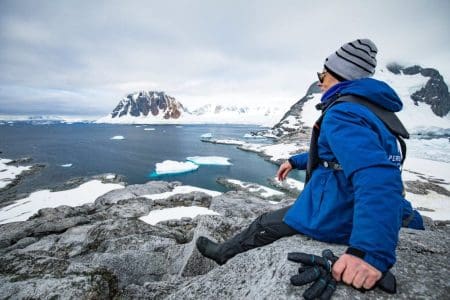 Greener Pastures is a small sustainable travel company based in Northeast India which promotes responsible tourism and adventures to exotic places, with a prime focus on uplifting local communities and safeguarding the environment.
Greener Pastures is a small sustainable travel company based in Northeast India which promotes responsible tourism and adventures to exotic places, with a prime focus on uplifting local communities and safeguarding the environment.
Its itineraries offer the best experiences that can be enjoyed while travelling in the pristine destinations of Northeast. Travellers get the opportunity to interact with the local communities, visit lesser known and off-beat destinations, get close to nature, leisurely explore around on their own pace, try ethnic delicacies and enjoy warm hospitality of the local host families.
Greener Pastures tailor make holidays as a bespoke service, including to Nagaland, one of Northeast India’s most fascinating states. Only recently has the outside world been able to explore more of this land. It has sixteen different indigenous tribes, each of them having their own language, culture and festivals. Though Christianity has influenced a major part of their tribal lifestyle, the tribes still retain much of their original and ancient customs and cultures which can be experienced during village walks and also on the occasion of indigenous festivals. Most of the rural folk were once fierce tribal warriors and head-hunters, but are now friendly villagers.
If you visit Nagaland in December, don’t miss the spectacular Hornbill Festival.
THE EXPERIENCE
This tour will take you across the hilly terrain of Nagaland from the Patkai hills in the north east to the base of Japfu Peak in the south west. You will visit the verdant hills of remote Mon district where the once headhunters Konyak Tribe live. In Mon you will find many traditional long houses, old tattooed villagers and Konyak handicrafts. In Mokokchung, visit villages of Ao tribe, old churches and see Morung dormitories and log drums. The tour will end in the Angami dominated regions of capital Kohima and nearby villages such as Tuophema, Khonoma and Dzuleke where you will be staying in community run homestays with local families.
HIGHLIGHTS OF THE JOURNEY
Traveling to the remote Naga villages Visit Longwa village, half of which lies in Myanmar See the old tattooed head hunters of Konyak tribe Interact with tribal chiefs See World War II battle sites, memorial and museums Experience culture of Angami tribe Rural homestay in community run eco-tourism projects.
DETAILED ITINERARY (11D/10N)
Day 1- Dibrugarh
Arrive at Dibrugarh, an important tea centre in Assam. Check-in at a standard city hotel or at the comfortable clubhouse with modern amenities. Rest of the day will be free to explore the local markets in the town, see the nearby tea gardens, visit a shrine of Hinayana Buddhism or go on a stroll along the banks of Brahmaputra River and enjoy the sunset scene.
Accommodation: Gymkhana Club or Hotel Nataraj, standard Meal plan: Lunch, Dinner
Day 2- Dibrugarh – Mon
After breakfast, drive to Mon (6 hours) in the Patkai hills of northern Nagaland. Mon can be considered as one of the most remote regions of eastern India and is the home of the fierce head hunting Konyak Tribe, known for their tattooed faces, wood carving and gun-making skills. The Konyaks can be easily recognized from the other Naga tribes for their tattooes earned from their head-hunting expeditions, which stopped only in the 1960s. Your stay will be in a family run guesthouse with basic amenities.
Accommodation: Vinngoi guesthouse or Helsa cottage, basic
Meal plan: Breakfast, Lunch, Dinner Journey: 120km, vehicle
Day 3- Mon – Longwa – Mon
Go on a day trip to the remote eastern corner of India to Longwa Village (2 hours), half of which falls in Myanmar. Visit the home of the Angh (village chieftain), whose house interestingly is divided by the border. Interact with the chief and other Konyak families to learn about their rich history and culture. See their local crafts and war trophies collected in the Morungs (dormitories), where young children were taught their traditions. The Morungs also have large log drums which are used to alert the villagers. One can also purchase beautiful tribal ornaments and interesting metal crafts souvenirs from the villagers. Explore the countryside, walk down their farms where they practice Jhum cultivation. Later, return to Mon by evening.
Day 4- Mon – Sibsagar
Visit few nearby Konyak villages such as Hongphoi, Wangla, and Old Mon. A good opportunity to observe the Konyak lifestyle, tribal arts and crafts. In Hongphoi, it is easy to see village elders with tattooed warrior faces. Visit the houses of the chiefs, which are decorated with skulls of wild buffaloes and other hunted animals. Later, drive to Sibsagar (5 hours) in Assam for overnight mid-way halt. Arrive by evening.
Accommodation: Shiva Palace or Hotel Brahmaputra, standard hotels Meal plan: Breakfast, Lunch, Dinner Journey: 100km, vehicle
Day 5- Sibsagar – Mokokchung
In the morning, visit the monuments of Sibsagar, the historical capital of Assam. See the old temples, lakes, royal pavilions, burials and ruins of the Tai Ahom dynasty, optional. Then, travel to the town of Mokokchung (5 hours), which is one of the most important towns of Nagaland. Historically, Mokokchung was the first town established by the British in the Naga Hills, it is also the home of the Ao tribe, who are famous for their arts and folklore.
Accommodation: Whispering Winds or Hotel Metsuben, basic hotels Meal plan: Breakfast, Lunch, Dinner Journey: 130km, vehicle
Day 6- Mokokchung
Explore the nearby villages of Ao tribe. Visit Mopungchuket, famous for the story of Jina and Etiben, the Ao version of Romeo and Juliet. See the beautifully carved time pillar, which depicts the chronological history of the Ao tribe along with its tales of legends, battles and migrations. Visit the sacred lake nearby whererituals and sacrifices wereperformed before wars. See old churches, log drums, Dzukis (dormitories) and the cultural museum in the village which has an interesting collection of artifacts and rare photographs. Also visit the nearby village of Aliba, where the Aos became the first Naga tribe to be converted into Christianity by the Baptist Missionaries in 1872. After lunch, explore the villages of Longkhnum and Ungma, which is the largest village of the Ao people. One can still see elderly villagers with traditional tattoos. Enjoy the panoramic view of the Doyang dam below from Longkhnum village.
Day 7- Mokokchung – Tuophema
After breakfast, travel towards Tuophema village (7 hours) near Kohima, the capital of Nagaland. Tuophema is a village of the Angami tribe, one of the largest tribal communities of Nagaland. Explore the village and observe the lifestyle of the Angami people. Exerience a rural stay at Tuophema Tourist Village in traditional styled
cottages decorated with wood-carvings and experience the ethnic cuisine of the Angami tribe prepared in the community kitchen.
Accommodation: traditional cottages, basic Meal plan: Breakfast, Lunch, Dinner Journey: 110km, vehicle
Day 8- Tuophema – Kohima – Tuophema
Enjoy a day trip to Kohima (2 hours) to see the various attractions, many of which are related to the historic Battle of Kohima in 1944. Visit the World War II Memorial located at the centre of Kohima, which was once the battle site. It is the main landmark of the town and commemorates the sacrifices of the British and Indian troops resisting Japanese invasion. Visit the Reconciliation Cathedral, the largest church in India. It is noted for its beautiful architecture, mural paintings and the view of the town from Aradura hill top. The State Museum is another interesting attraction which exhibits a rare collection of tribal artifacts of different tribes which portrays their history and indigenous culture. Also visit Kisama Heritage Village, venue of the famous Hornbill Festival. It showcases Naga tribal architecture and also has a World War II Museum within the complex.
Day 9- Tuophema – Khonoma- Dzuleke
After breakfast, proceed to Dzuleke (3 hours), another village of the Angami tribe. Dzuleke is a remote idyllic village surrounded by pine forests and streams. A community based ecotourism project exists and is run by the village council. On the way, visit Khonoma village, well known for its initiatives of forest conservation and ban on hunting. One can also see the historic spots where the natives fought against the British colonists. Rest of the day will be free at leisure to enjoy amidst the greenery of the Naga Hills. Your stay will be in a village homestay with a local Angami family.
Accommodation: village homestay, basic Meal plan: Breakfast, Lunch, Dinner Journey: 70km, vehicle
Day 10- Dzuleke – Benreu – Dzuleke
Go on a day trip to Benreu (2 hours), village of Zeliangrong tribe. It is located at an elevation of 1900m at the base of Mt.Pauna where travelers can go on short hikes. Explore the village and visit the Morung (dormitory) at Benreu, considered as the oldest structure in Nagaland. Zeliangrong tribe comprises of three clans namely Zeme, Liangme and Rongme. Few Zeliangrong tribesmen continue to practice their old beliefs and animist religion. One can also try the interesting bitter honey of Benreu, which is made from the hive Teliane bee and has medicinal properties. Return to Dzuleke by dusk. .
Day 11- Dzuleke – Dimapur
Leave early morning to Dimapur airport (4 hours) for departure in the afternoon. End of tour.
Price of the trip £650 pp based on 4 sharing tour (and twin share accom)
Includes: Transportation in private vehicle (Innova/Xylo) Airport pickup Driver allowance and fuel Accommodation, twin sharing All meals Sightseeing activities English speaking tour guide Inner Line Permit Entry tickets and parking fee
Excludes: Airfare, train tickets Personal expenses (alcohol, laundry, tips etc.) Camera fee, where applicable
CHOOSING GREENER PASTURES
We provide authentic and immersive experiences across the vast and exotic frontiers of Northeast India which are eco-friendly, benefit the communities and are tailored to ensure that travelers take back lifelong memories. We offer the hospitality of a friend, the knowledge of a local, the service of passionate travel experts and an escape to an unexplored paradise. Our English speaking native guides and experienced drivers are well trained to conduct the trip smoothly. They are interactive and also ensure the comfort of the guests. We offer personalized itineraries as per the requirements of our clients. The itineraries are well planned in order to experience the maximum activities at each place. Travel time is also well considered in order to not make the journey hectic. Many of our guests have given positive feedback of their travel with us. We take their suggestions into consideration and have also received many clients through their reference for our successful tours. Our eventual aim is to start many philanthropic initiatives from which we plan to help the indigenous tribal people, contribute to social organizations and also help conserve the natural beauty of the region.



